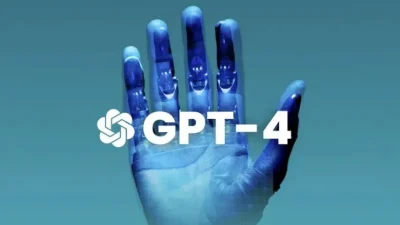When interacting with advanced AI models like GPT-4, maintaining context in lengthy conversations can sometimes pose challenges. While the model is designed to manage context effectively, certain limitations and user practices may lead to errors or misunderstandings. This article explores common context-related issues in dialogues with GPT-4 and offers strategies to address them.

Understanding Context in AI Conversations
GPT-4 operates by analyzing the preceding messages in a conversation to generate coherent and relevant responses. Context retention is critical for maintaining the flow and ensuring the accuracy of responses. However, the following factors can disrupt this process:
- Exceeding Context Length. GPT-4 has a finite context window, typically accommodating a specific number of tokens. Exceeding this limit can result in the loss of earlier parts of the conversation.
- Ambiguity in User Inputs. Vague or unclear instructions can confuse the AI, leading to irrelevant or incorrect responses.
- Inconsistent Referencing. Switching topics abruptly or failing to use consistent terminology can break the continuity of the dialogue.
- Overloaded Inputs. Providing excessively detailed or layered instructions within a single input can overwhelm the model, reducing its ability to maintain focus.
Common Errors in Context Maintenance
Repetition of Questions
Users often repeat earlier questions or requests, assuming the model has “forgotten” them. This can happen when the dialogue becomes lengthy, and the initial context scrolls out of the model’s accessible window.
Misinterpretation of Pronouns
In extended conversations, pronouns like “it,” “they,” or “this” can lose their referents. For instance:
- User. What about the advantages of this approach?
- AI. Could you clarify what “this” refers to?
Loss of Specific Details
When the dialogue involves intricate topics, earlier specifics may be overlooked, leading to generic or less relevant responses. This is particularly common in technical or multilayered discussions.
Common Context-Related Errors in GPT-4 Dialogues
| Error Type | Example | Impact |
|---|---|---|
| Repetition of Questions | “Can you explain that again?” | Redundant responses |
| Misinterpretation of Pronouns | “What does this imply?” | Ambiguity in answers |
| Loss of Specific Details | “Discuss the solution’s advantages.” | Generic or incomplete information |
Strategies for Maintaining Context
Be Explicit in Inputs
Clear and specific instructions help GPT-4 understand and retain context effectively. For example, instead of saying, “Explain this further,” specify, “Explain the advantages of renewable energy in rural areas.”
Summarize Key Points
In lengthy conversations, periodically summarizing the discussed topics can reinforce the context. For instance:
- “To recap, we’ve covered the benefits of X and Y. Let’s now discuss Z.”
Use Consistent Terminology
Avoid introducing new terms or changing references mid-dialogue. Consistency in language ensures the model understands the continuity.
Segment Complex Instructions
Instead of providing lengthy and detailed inputs, break them into smaller, manageable parts. This allows GPT-4 to focus on one aspect at a time.
Strategies to Improve Context Retention
| Strategy | Example | Benefit |
| Explicit Inputs | “Explain renewable energy benefits.” | Clearer, more relevant responses |
| Summarizing Key Points | “To recap, we’ve discussed…” | Reinforces context |
| Consistent Terminology | Use “solar panels” throughout | Reduces confusion |
| Segmenting Instructions | Provide one question at a time | Improves focus |
The Role of the User in Context Management
While GPT-4’s capabilities are impressive, users play a pivotal role in ensuring effective communication. Here’s how users can contribute:
- Active Monitoring. Regularly check if the AI’s responses align with your intent. If discrepancies arise, clarify or restate the instructions.
- Avoid Overloading. Refrain from combining multiple questions or topics in a single input. This ensures the model can address each point thoroughly.
- Use Contextual Reminders. When referring to earlier parts of the conversation, briefly summarize them to help the model recall.
- Test for Clarity. Before submitting an input, consider whether it could be misinterpreted. Rephrase ambiguous statements for clarity.
Example of Effective Context Management
Ineffective Input. “What about its impact on local communities?”
Effective Input. “In the context of solar panel installation, what is the impact on local communities?”
Conclusion
Maintaining context in GPT-4 dialogues requires a combination of model capabilities and user practices. By providing clear, consistent, and segmented inputs, users can significantly enhance the quality of interactions. While GPT-4 is adept at handling complex conversations, proactive strategies ensure a smoother and more productive experience.





